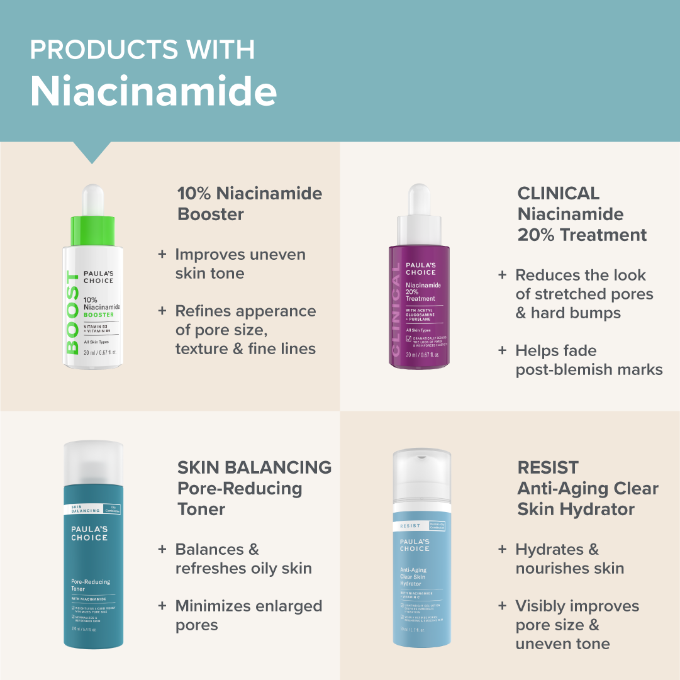Niacinamide also known as vitamin B3 or nicotinamide is one of the most powerful antioxidant and antiaging vitamin in skin care. It’s no wonder it is a favorite among cosmetic formulators as it effectively promotes healthy looking skin while being suitable for all skin types, including sensitive skin. Niacinamide is derived from niacin, niacin is a nicotinic acid. The terms “nicotinic acid” and “niacinamide” are often used interchangeably, although, they offer different benefits. In skin care, niacinamide is the preferred version.
What Will Niacinamide Do For Your Skin?
Niacinamide has an array of benefits as a skin care ingredient, including:
Minimizing the appearance of enlarged pores and tightening lax or stretched out pores.
Restoring the skin’s defenses against moisture loss and dehydration by improving a weakened skin barrier.
Visibly improving uneven skin tone, and discolorations from sun damage.
Softening fine lines, wrinkles, and diminishing dullness.
Manages excessive sebum production.
It generally helps to create a more youthful and radiant glow.
How To Use Niacinamide
Niacinamide is a powerful ingredient for both skin moisturization and skin brightening, it is typically used at 1-6% in formulations, (up to 10% is possible, however higher doses can sometimes cause irritations) as with the use of all actives, it’s best to start at a lower concentration and gradually allow your skin to acclimatize before increasing the dosage.
Generally, a multi-ingredient approach to skin care can sometimes be more effective, this simply means that skincare products may work better when paired with other ingredients. Niacinamide in particular, when paired with other synergistic ingredients can help to produce a better result. Fortunately, niacinamide is compatible with other discoloration-reducing ingredients such as vitamin C, licorice, kojic acid, tranexamic acid and retinol, although there’s is a lot of popular information on the internet suggesting that Niacinamide and vitamin C are not compatible, research is currently inconclusive. The science suggests that though there is some negative interactions between the two vitamins, however, research is still ongoing and currently inconclusive.
Niacinamide can also be used with ceramides, peptides, hyaluronic acid, AHAs, BHA, and all types of antioxidants. It is water soluble and relatively easy to formulate with, you simply add to the water phase of your formulation. However, it performs best at around a neutral pH, say, 6-7-ish to remain effective. At a higher or lower pH niacinamide converts into nicotinic acid, which can cause irritations.
Among other commonly used skin care ingredients like Vitamin C and retinol, Niacinamide stands out because of its high level of tolerance for most skin types and its versatility for almost any skin care concern. Given this versatility, it would make a great addition to your serums, emulsions, and toners, oils, and cleansers.
Ready to harness the power of Vitamin B3? Head over to the shop and also see all the various types of vitamin C on offer.
The post The Magic Of Niacinamide In Skin Care appeared first on Eats Africa .

